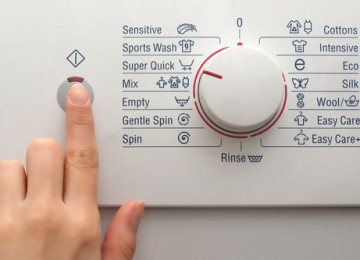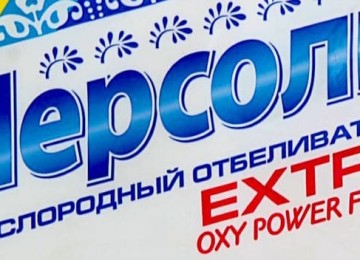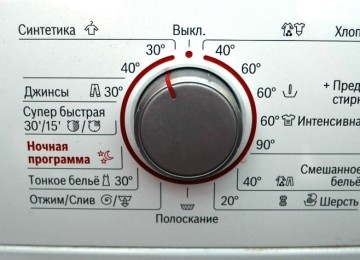In every home medicine cabinet you can find a bottle of iodine. This pharmaceutical composition is used to treat burns, wounds, and skin rashes, but if it ends up on clothes or shoes, it leaves behind difficult-to-remove marks. To save your favorite item, it is important to figure out how to remove iodine stains at home.

What to do if iodine gets on your clothes
If there are drops of iodine on your clothes, you must immediately begin removing them:
- When choosing a method for removing traces, check the type of fiber, intensity and freshness of the stain.
- Before using household chemicals or folk remedies, check their effect on the material. To do this, apply a small amount of the composition to an inconspicuous area or piece of fabric, wait a few minutes and evaluate the reaction.
- If iodine ends up on clothes made from delicate or synthetic fibers, avoid using household chemicals and stain removers. Such compositions can completely destroy the material, making the item unsuitable for further wear.
- Please note that fabrics containing synthetics, as well as denim products, can fade when treated with chemicals and exposed to hot water.
- When choosing aggressive drugs and solvents, provide personal protective equipment and wear gloves. This will avoid the negative effects of toxic substances on the skin of your hands.
- When iodine appears on clothing, wash the contaminated area as quickly as possible. If this is not possible, blot the stain with a damp cloth, sponge or cotton pad. After such treatment, iodine will not be able to be absorbed into the structure of the material and it will be easier to remove it.
- Process marks not from the front side, but from the back. To do this, place a cotton cloth or other absorbent material under it.
- To eliminate the possibility of iodine spreading over the surface, treat the stain in a circular motion, working from the corners to the center.
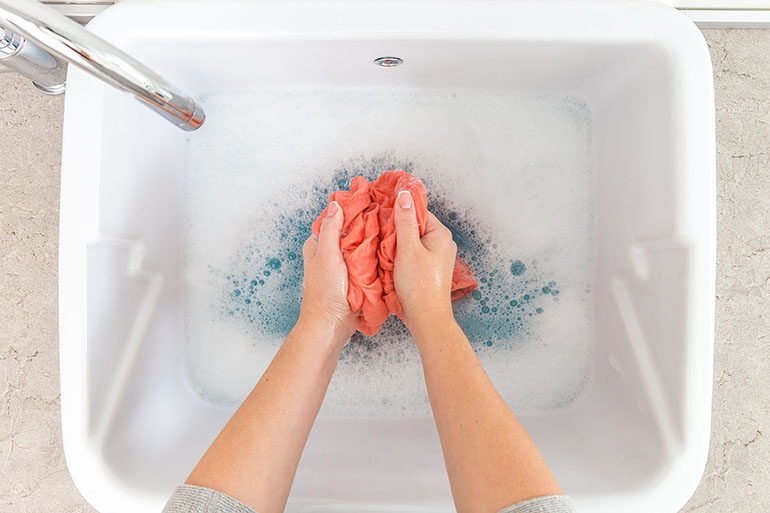
Special chemicals provide faster results in removing traces of iodine.
The selection of methods and compositions for removing iodine also depends on the characteristics of the clothing owners. So, if you need to clean the things of children, allergy sufferers, or people with hypersensitivity to household chemicals, it is better to use safe and gentle folk remedies.
New marks can be easily removed in the simplest possible way. To do this, you need to hang contaminated clothes outside, and then wash and dry them.
Delicate materials

When caring for clothes made of silk, wool and other delicate materials, you should use exclusively oxygen stain removers with a gentle effect. Household chemicals, including acetone and alcohol-based solutions, contain aggressive components and can make the item unsuitable for use.
You can treat the problem area with starch or baking soda, without mixing the additives with vinegar, and then wash it with laundry soap.
The safest way to remove medical solution from delicate items is dry cleaning.
Natural fabrics
You can remove marks on things made from organic fibers with acetone. The liquid triggers a chemical reaction with the pharmaceutical substance and neutralizes its components. But it is prohibited to use acetone on synthetic fabrics, as it can destroy their structure.
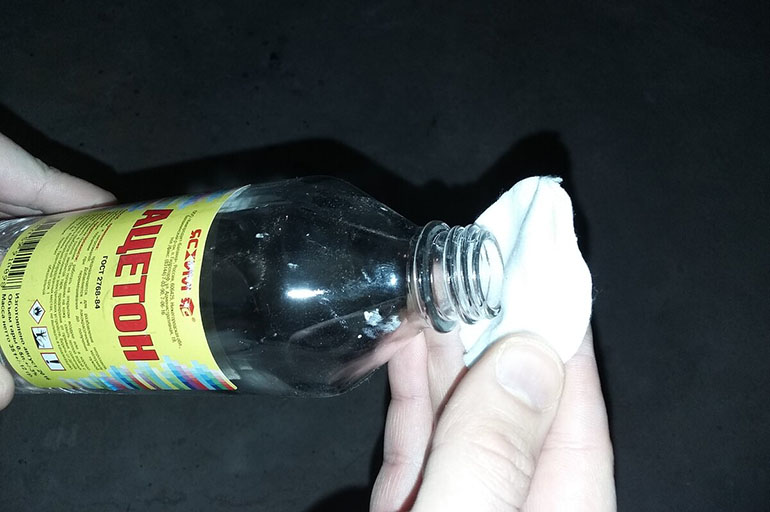
Iodine often gets on sheets and medical gowns made from natural fabrics.
If the material contains cotton fibers, it is better to use special bleaching compounds to remove yellow marks.
Chlorine-based stain removers, such as Belizna, work well with stains. To prepare the solution, you must take into account the manufacturer's recommendations from the label.
You can neutralize stains on natural fibers using raw potatoes:
- Peel and cut the tuber.
- Rub the released juice into the contaminated surface.
- Rinse the item.
Synthetics
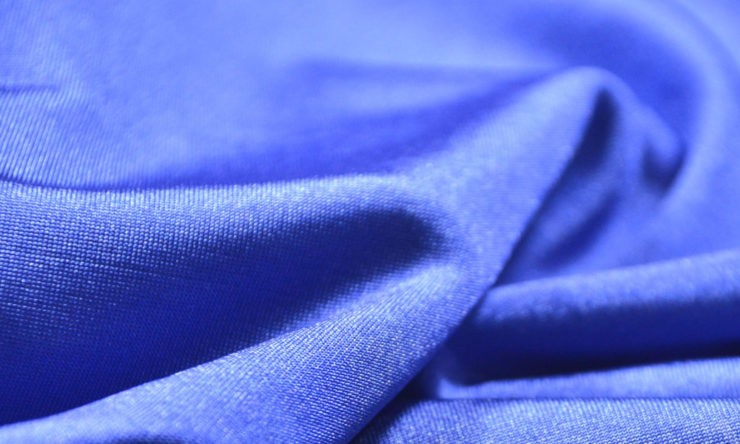
Items made from synthetic fibers, especially polyester, should be treated with solutions with a low content of aggressive substances. The selected composition should be diluted with water and then applied to the area of clothing with traces of iodine. Ammonia, denatured alcohol and ammonia are suitable for processing.
It is better to avoid using active solvents and stain removers for synthetics. They are capable of leaving behind streaks and burning through fabric.
Leather and suede
An unpleasant mark on a leather skirt or suede bag can be wiped off with alcohol. If the mark is fresh and the iodine has not had time to be absorbed deeply into the fibers, you should treat the area with vodka, cologne or perfume. The listed methods do not provide such a quick result, but they eliminate fresh stains.
.jpg)
Starch is suitable for removing iodine from suede items.

This express remedy should be used according to the following instructions:
- Apply a thick layer of potato starch to fresh marks.
- After 15 minutes, brush off the component and repeat the procedure.
- After 30 minutes, wash clothes with laundry soap.
Knitten things

Glycerin is suitable for removing traces of iodine.
Instructions:
- Before processing, place the item in the washing machine and select a temperature setting of 60 ℃.
- After completing the procedure, rub the stain with a mixture based on water, chalk and glycerin.
- Cover the product with polyethylene and leave for 4–5 hours. During this time, the prepared mass will completely saturate the fibers of knitted clothing and dissolve the medicine.
- At the end of the procedure, rinse the item and dry it in the open air.
Shoes
You can use baking soda to remove iodine stains from shoes. Apply the powder to the moistened fragment and then cover it with a damp cloth. It may take about 8–10 hours for positive changes to appear.
.jpg)
A bleach-based product, such as “Belizna,” is no less effective. To remove stains, apply bleach to the contaminated area, and after 10 minutes, wipe off the residue with a brush or rough sponge.
Iodine removal technology
Almost all stains from clothing or shoes can be removed if you start treating them as quickly as possible. Iodine stains are no exception.
New stains
If the medical solution is on a textile item, you must:
- Thoroughly blot the area with a napkin, rag or other material that absorbs moisture.
- Hang the item outside and dry. The iodine will gradually burn out and evaporate under the influence of the sun.
To increase the effectiveness of the treatment, you can treat the stain with water and laundry soap, and then rinse. This will soften fresh stains without using more aggressive agents. As an additional measure, you can wash the item by hand or in a machine.
Iodine can be removed from white items with ammonia.
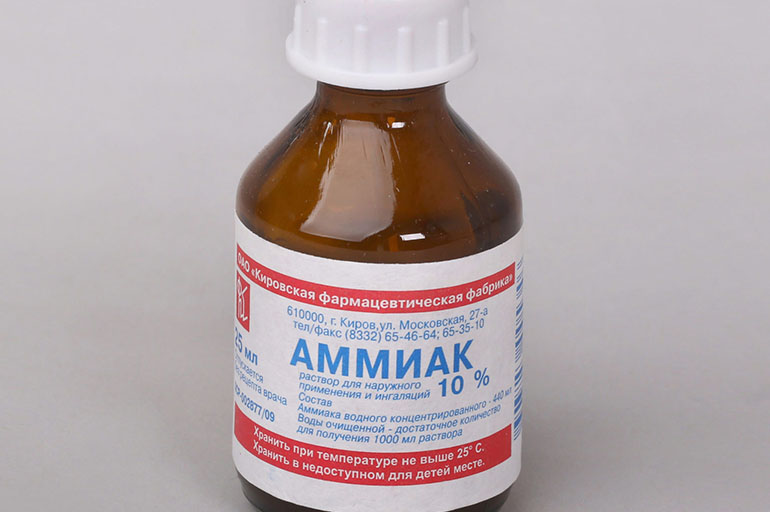
To carry out the procedure, you need to:
- Moisten a cotton swab in ammonia.
- Start rubbing the substance into the fabric.
- When the selected fragment turns pale, rinse the area under running water.
Another simple method involves using a hot iron. Place a clean cotton cloth on top and bottom of the dirty item, iron the area for 15 minutes and wash.
Cow's milk at room temperature is suitable for removing fresh stains.
You will need:
- Submerge the stained piece of clothing in a container with the drink and leave for 30 minutes.
- Rinse the item in clean water.
- If there are yellow stains, treat them with laundry soap. For white items of clothing, you can prepare soap with a bleaching effect.
Old stains
Stubborn stains can be removed with baking soda and acetic acid.

To do this, you need:
- Sprinkle soda on the fabric surface to cover the stain.
- Add 1 tbsp to the powder.vinegar or acid to stimulate a chemical reaction.
- 2-3 hours after treatment, rinse items under cold water and wash.
Stale iodine residues on clothing can be removed using ammonia:
- Prepare a mixture based on ammonia and cold water (1 tbsp ammonia per 1 liter of water).
- Mix the ingredients.
- Treat the contaminated fragment with the prepared solution.
If you have particularly difficult stains, you can soak the item for several hours and then rinse under running water.
Precautionary measures
It must be taken into account that household chemicals, professional bleaches and stain removers are aggressive compounds, so their use requires compliance with strict requirements. Before distributing the substance over the surface of clothing, you should test its effect on a small area of fabric. If the procedure does not change the color of the fibers and does not lead to the appearance of new stains, the product can be used for its intended purpose.
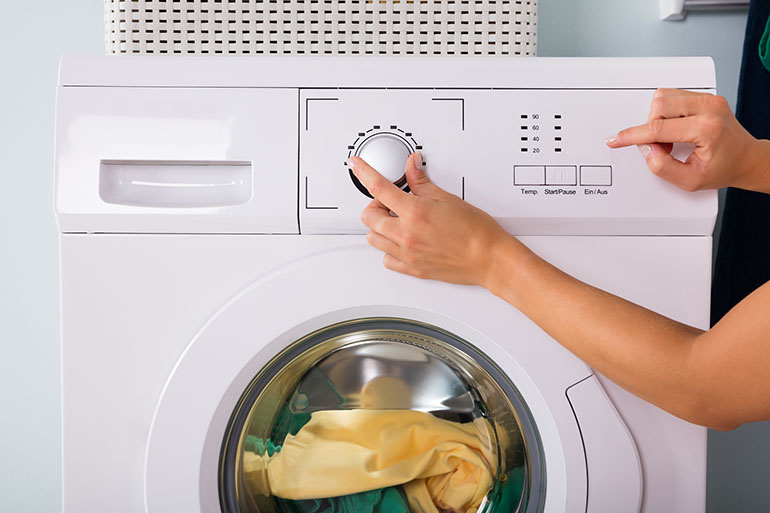
When performing treatment, care must be taken not to smear or increase the area of contamination. If the fabric is made of synthetic or delicate fibers, you should not resort to the use of aggressive substances, as they can burn the material or cause related problems. It is better to give preference to proven folk remedies.
After treatment, you need to rinse the stain under running water, and wash the clothes by hand or in a machine. Products made from denim cannot withstand the effects of chemical reagents, so they are cleaned exclusively with natural ingredients.
Using stain removers to remove iodine
Various preparations for removing traces of medical solution are available on the counters with household chemicals.
Their application consists of several stages:
- Preparation of the composition according to the manufacturer's instructions indicated on the label.
- Immersion of contaminated clothing or a separate fragment into the mixture.
- Rinse the item in clean water after soaking.
Vanish Gold
A fairly popular composition that copes with pollution of any degree of age and complexity. Applying the gel to the surface before immersing it in the machine will discolor the stain, and subsequent washing will completely remove the yellow-brown marks.
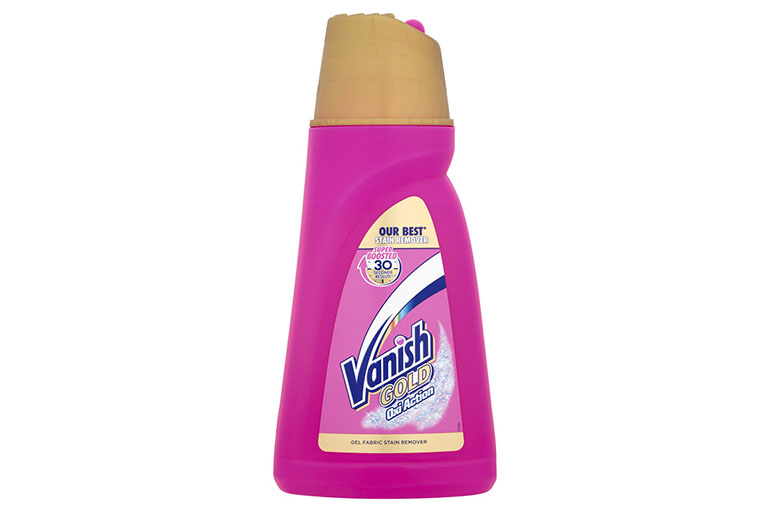
The algorithm for removing traces is quite simple:
- Distribute the gel over the contaminated piece of clothing.
- Rub the fabric with the bottom of the measuring cap.
- After an hour, remove the stain and place the item in the washing machine adding 100 ml of product.
In case of hand washing, the stain remover should be diluted in 4–6 liters of water, and then soak the item in the composition for 1 hour.
White products require aging for 5–6 hours.
Dr. Beckmann
The stain remover contains special substances that break down color pigments, but do not harm the shade and structure of the fibers.
To remove iodine from textiles you need:
- Saturate the area with the product.
- After 10–30 minutes (depending on the degree of contamination), blot the stain with a napkin.
- Wash the product by hand or in a machine.
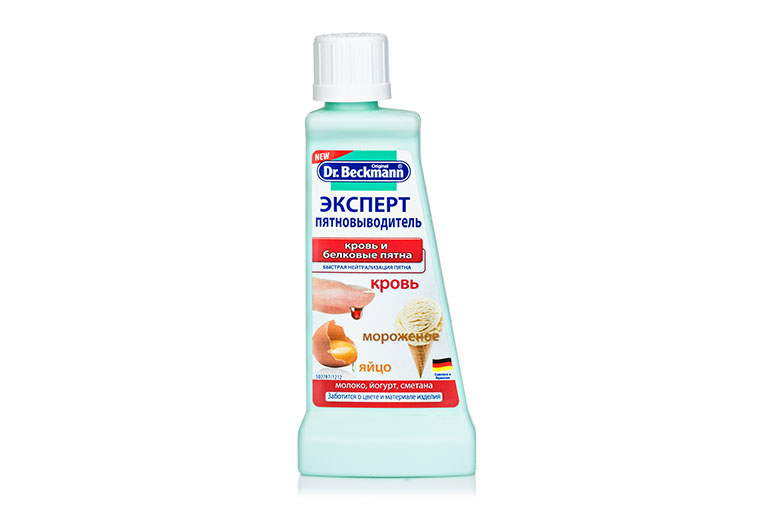
The product is suitable for dry cleaning and emergency removal of fresh marks. It also effectively removes old marks.
Udalix Oxi
This is a universal product that is suitable for pre-treatment of dirt, soaking and washing clothes in a machine.
To remove stains you need:
- Dilute 3 tbsp. l.drug in 2 liters of warm liquid.
- Immerse the textile item in the prepared solution for 30–45 minutes.
- Rub the yellow marks thoroughly with a clothes brush or your hands.
- Wash the item in the machine.
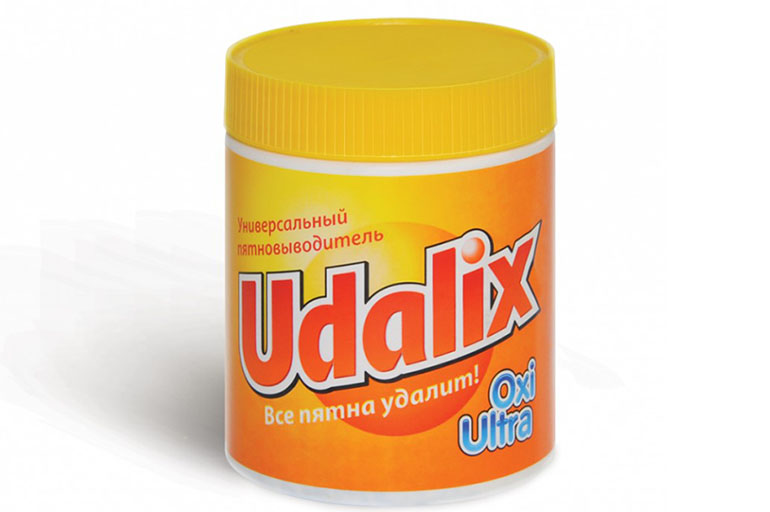
The highest effectiveness of the product is observed at a water temperature of 60 °C.
How to remove iodine stains at home
Natural remedies are effective in removing fresh iodine stains on white and colored fabrics. To prevent the material from being spoiled, you need to take into account the permissible dosage of the active ingredients, and if there is a risk of spoiling the item, first assess how the clothing reacts to them.
Laundry soap
Using this affordable product, you can remove stains from almost any fabric:
- Lather the stain thoroughly.
- Wait 30 minutes.
- Wash and rinse the item.
.jpg)
You can use 72% soap to clean things.
Soda and vinegar

The food additive has the same effect as starch. However, in excess concentration it can discolor the fabric.
To remove stains you need:
- Moisten the desired fragment with water, and then apply a small amount of soda to the surface.
- Let the powder sit for 30–60 minutes.
- Brush over the surface with a clothes brush.
- Wash the product in a machine or by hand.
Vinegar is used to increase the effectiveness of the treatment and remove old stains. You can spray the soda layer with a spray bottle and leave for 2 hours.
Ammonia
To remove drops of antiseptic on white things you need to:
- Dilute 2 tsp. ammonia in 1 tbsp. liquids at room temperature.
- Moisten a napkin or cotton swab in the prepared mixture.
- Use it to treat the fragment with the stain, being careful not to go beyond it.
- Rinse clothes under the tap and wash as usual.
.jpg)
If you need to remove old stains, before the procedure you should soak the item in an ammonia solution (1 tablespoon of substance per 1 liter of water) and leave for 2–3 hours.
Acetone

Before using this aggressive substance, you need to test it on an inconspicuous piece of clothing. The solvent can destroy the structure of delicate fabrics and completely discolor the item.
If there is no negative reaction, you should:
- Soak a cotton pad in acetone.
- Treat the stain without going beyond its boundaries.
- Rinse the item under running water and re-treat the area with laundry soap.
An alternative to acetone is nail polish remover. It has a more gentle effect without aggression to fabric fibers.
Starch
The food supplement is an express product for removing traces of iodine from any surfaces, including denim, suede and velvet.
.jpg)
To do this you need:
- Place a thick layer of potato starch on the surface of the clothing with fresh marks.
- Wait 15 minutes.
- Carefully wipe off the starch layer with a brush and repeat the treatment.
- After 30 minutes, wash the item with laundry soap.
Old stains can be eliminated in this way:
- Moisten the fragment with cool water.
- Spread starch in a thick layer and wait 12–14 hours.
- Run a wash cycle.
Starch is safe for colored and delicate items.
Hydrogen peroxide
The composition is suitable for processing almost all types of fabrics, including delicate ones. Peroxide should be applied to the contaminated area for about 40 minutes.
.jpg)
If a large area is affected, you must:
- Completely soak the item in a solution of hydrogen peroxide (1 tablespoon of pharmaceutical product per 1 liter of water).
- Rinse the product thoroughly and wash it with laundry soap.
Photoreactive
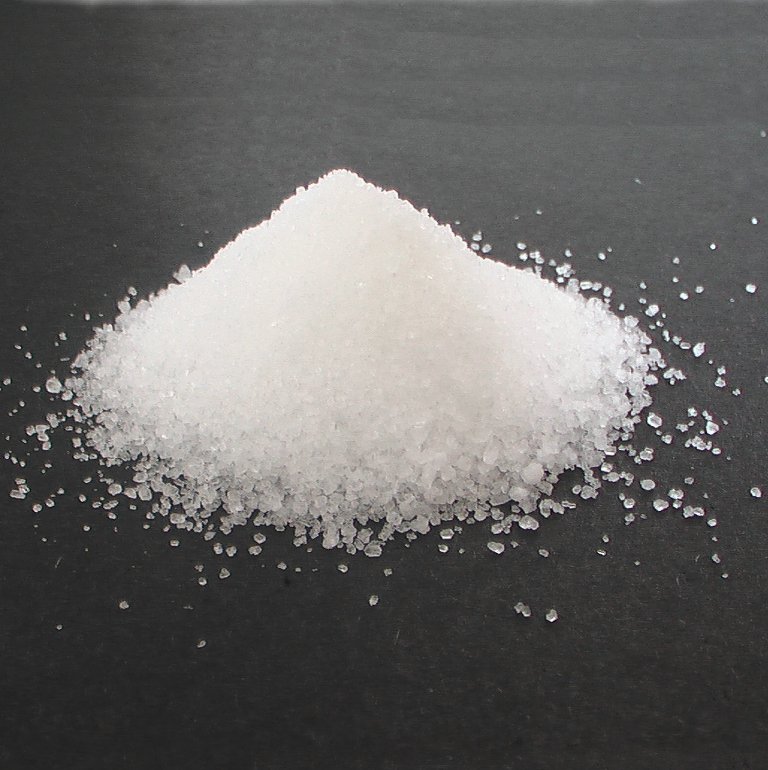
As an effective remedy for iodine stains, you can use sodium hyposulfite, which is widely used in the photo industry:
- Before applying the substance to the main stain, make sure that it will not harm the material. You can try to evaluate the reaction of the fabric to the photoreagent using an inconspicuous fragment of the product.
- Apply the prepared solution to the mark, wait a few minutes, and then rinse the item.
- Wash clothes and rinse them using a powder composition.
Lemon acid
Lemon juice contains special components that are used to remove iodine marks from white clothes. To do this, you need to squeeze a small amount of the composition onto the defective fragment, leave it for 20–30 minutes, and then rinse it. In case of hand washing, you need to add 1 tbsp to the powder. l. lemon acid, and for machine processing - 3-4 tbsp. l.
.jpg)
Ultraviolet
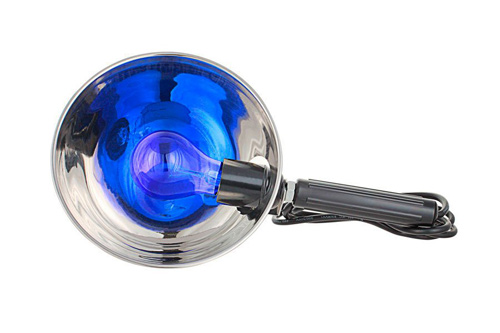
If you don’t have any special preparations or stain removers on hand, you can try putting the clothes in direct sunlight or an ultraviolet lamp. Under the influence of radiation, the droplets will evaporate and the dye will lose its shade.
It is impossible to completely get rid of the stain in this way, but reducing its intensity is quite simple.
Milk
The affordable drink is suitable for caring for delicate fabrics of any color.
To remove traces you need:
- Place a small amount of warmed milk in a deep container.
- Place the contaminated area of clothing there.
- Wait 40–45 minutes.
- Wash the product thoroughly in a machine or by hand.
.jpg)
Dishwashing liquid
Detergent gels provide quick results when caring for items stained with iodine.
To do this you need:
- Apply the product to the stain and leave for 3-4 hours.
- Moisten the trace with water, lather and wait another 30 minutes.
- To consolidate the results, wash the product using the usual methods.
Potato
If you don't have ready-made starch on hand, you can use raw potatoes as an alternative:
- Rinse the tuber thoroughly and cut in half.
- Apply it to the stain on both sides of the material.
The chemical reaction will cause the marks to turn blue and can be removed by washing.
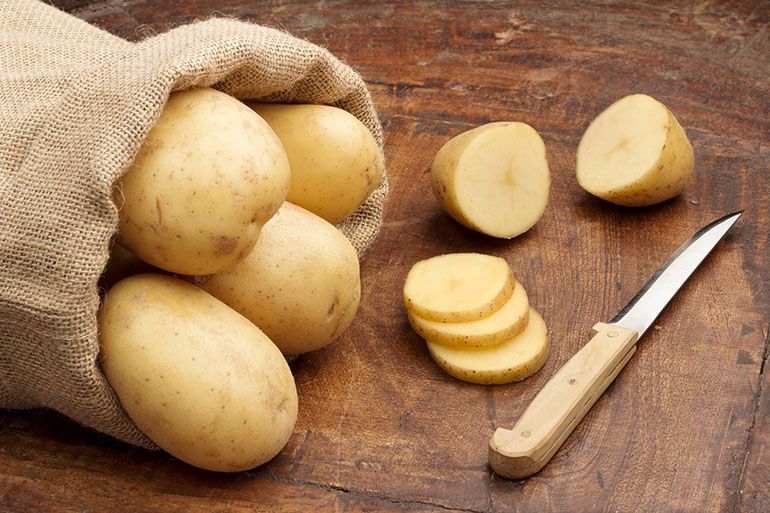
Difficult cases of iodine removal
In some cases, traces of iodine on fabric cannot be washed off with folk remedies. To solve complex problems, you have to use professional household chemicals.
Jeans

Products made from high-quality denim are not afraid of almost any processing. New marks can be covered with soda, salt, starch or baby powder. Old stains will have to be scrubbed with ammonia, vinegar or acetone. It is better to avoid using chlorine-containing solvents. You should also not wash your jeans in boiling water.
Plastic
You can wipe off the medical solution from plastic with baking soda:
- Wet the stain with water.
- Sprinkle a layer of baking soda powder over it and cover it with a damp cloth.
- After 10 minutes, wipe the mixture off the surface.
.jpg)
When carrying out the procedure, it is important to take special care, since soda is enriched with abrasive particles that can harm the material.
Stains on the carpet and sofa
You can remove iodine stains on furniture or carpet with stain removers, a solution based on soda and vinegar, starch or ammonia.
You should dilute the potato starch with water until a paste appears, and then apply the mixture to the stain and leave for 15 minutes.Residues can be washed off with a sponge and cold water. To consolidate the results, the carpet must be vacuumed.
Parquet
The surface of the floor covering can be cleaned of iodine using lemon juice:
- Divide the fruit into 2 parts.
- Squeeze out a little liquid and apply it to a cotton swab.
- Wipe the problematic part of the parquet.
- Wait for the iodine to dissolve and rinse off the coating with clean water.
.jpg)
Cleaning the leather surface
To care for skin that has been stained with iodine, the following are suitable:
- Ammonia.
- Vodka.
- Acetone.
- Lemon juice.
It is forbidden to remove stains on the skin with ultraviolet light. When exposed to radiation, the material may dry out or become deformed.
Linoleum
To neutralize the medication on linoleum, you need to wipe the area with a damp cloth soaked in a mixture of citric acid and water. It is important to repeat the action until the marks completely disappear from the surface.
White fabric
If drops of iodine get on a white cloth, you can prepare ammonia:
- Dilute 1 tbsp. l. products in 200 ml of water.
- Soak a cotton swab in the solution and begin wiping away dirt.
- Wash clothes in a machine or by hand.
Palace
Baking soda should be applied to the problematic piece of carpet. After 12 hours, the layer must be removed by washing the carpet and drying it outside. Ethyl alcohol is suitable for removing difficult stains.
Bed sheets
To remove iodine from bed linen, you can use hydrogen peroxide. A few drops of the pharmaceutical composition should be applied to the surface, left for 5 minutes, and then rinsed with warm water. As an additional procedure, you can wash your laundry in a machine.







